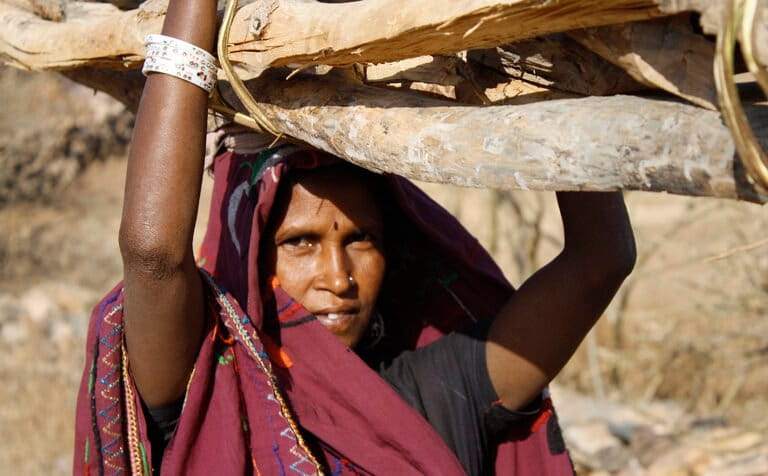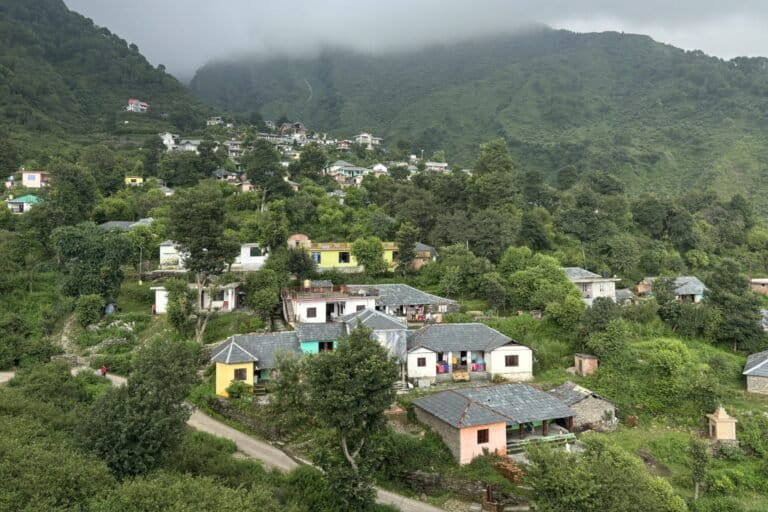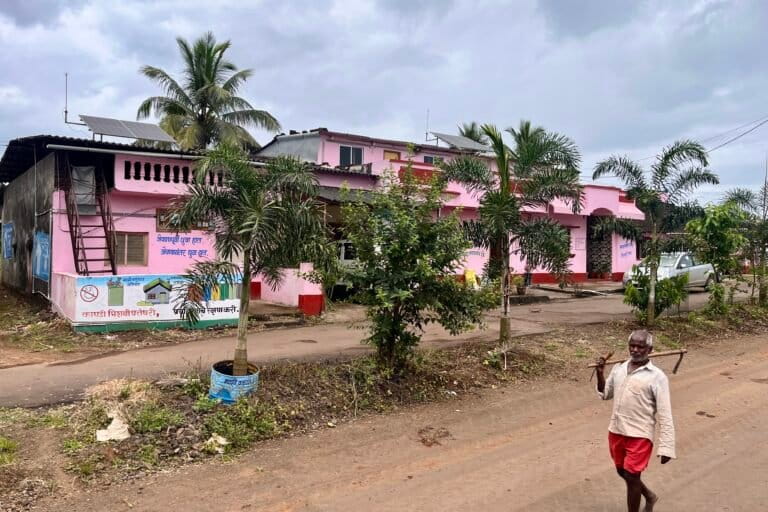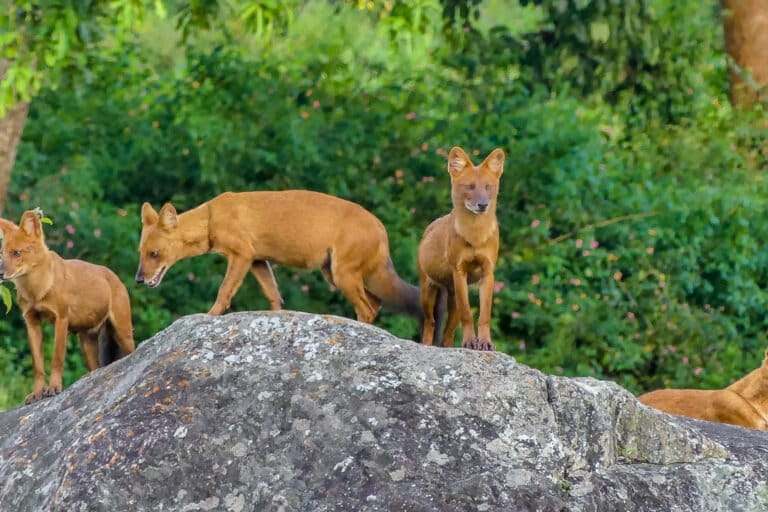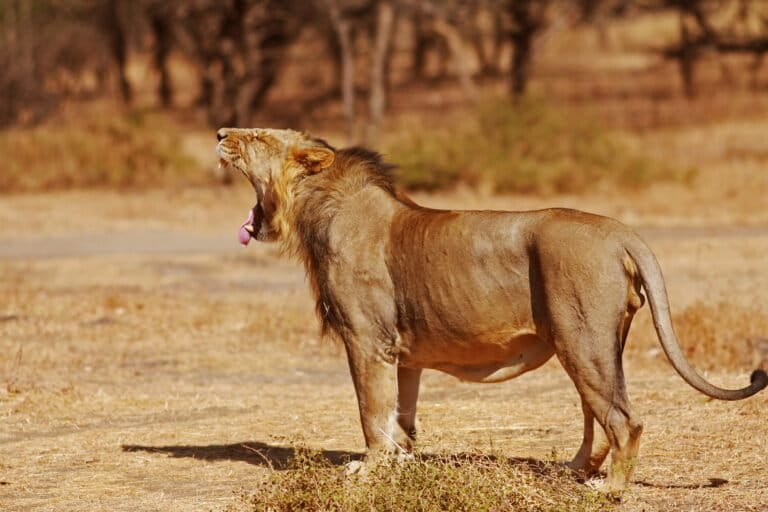- In north-east India, land is owned and managed by local indigenous communities. Community Reserves (CRs) are designated in these areas to increase the range of protected areas.
- Habitat loss and degradation has led to the decline of species in north-east India.
- CRs can serve as sanctuaries for many mammal species to continue to thrive and persist in a heavily fragmented landscape.
- Multi-stakeholder conservation efforts and further studies can aid in the conservation of species in the region.
Community Reserves (CRs), or protected areas managed by indigenous communities, are a useful instrument to balance conservation priorities and livelihood requirements of the communities, finds a study, which examines the importance of CRs for the conservation of mammal species in Meghalaya.
There are currently around 205 such community reserves in northeast India and despite being smaller in size, compared to protected areas, they offer a refuge for many species in the landscape.

Anthropogenic changes to natural habitats have led to a decline in wild mammal populations in northeast India, notes the study by researchers from the Salim Ali Centre for Ornithology and Natural History (SACON), Coimbatore, Tamil Nadu, and the Forests & Environment Department, Shillong, Meghalaya.
Practices such as illegal logging, mining, shifting cultivation, expansions of settlements, and so on have resulted in widespread habitat fragmentation. This has led to an increase in human-wildlife conflict in the region and further loss of biodiversity, the study, published in January this year, elaborates.
The study notes that in India, over a third of the indigenous communities reside in the northeast. These communities have traditionally been hunting meat for subsistence. However, in recent years, their hunting practices have intensified keep up with the demands of wildlife trade.
Findings from the study
The study looked at five CRs in the Ri Bhoi district of Megahalaya, namely Jirang CR (JCR), Nongsangu CR (NCR), Lum Jusong CR (LJCR), Pdah Kyndeng CR (PKCR) and Raid Nongbri CR (RNCR). Camera traps, reconnaissance surveys, and semi-structured questionnaire surveys were used to examine the diversity and abundance of mammals.

The questionnaire surveys were targeted toward the local agricultural community of Khasis living around the CRs. They aimed to investigate the perception of this community on population trends of mammals, hunting, meat-consumption, and directions in human-wildlife conflict. The survey covered seven villages and a total of 75 individuals were interviewed.
In terms of abundance of mammal species, the respondents had varied responses based on the district they were from. For instance, only respondents from JCR reported seeing wild boar, elephants often. Similarly, most respondents who reported seeing the leopard and leopard cat were from RNCR.
“In some of the CRs, a few of these species are not present and may have been eliminated quite some time ago. The leopard specifically is quite elusive and may not have been spotted by many of the respondents,” says Honnavalli N. Kumara, a researcher from SACON and a co-author of the study.
The study reports that most respondents stated the two main causes for disappearance of wildlife in their areas were habitat loss and degradation. Some respondents mentioned retaliatory killing and historical hunting as other reasons for the decline in species abundance, although the majority stated hunting is no longer practiced.
According to the paper, although hunting has decreased over time in this area, a lack of education and awareness about wildlife laws in the country may be contributing the idea that hunting in community forests is not illegal. Moreover, while the local community prefers certain types of meat such as ungulates, they are likely to consume any meat they are able to catch.
Habitat loss was attributed to practices such as illegal logging and shifting cultivation, along with forest fires. These changes to the natural landscape have affected the abundance of mammal species in the area and more research is needed to determine how the land use patterns of these species have changed.
Although the decline of many species such as the barking deer, sambar, and Chinese pangolin appears to be evidenced by the rare sightings of these species by respondents, the abundance of other species such as macaques, wild boar, elephant, and leopard cat among others have increased. However, according to the paper, “This may be a biased observation of the respondents as such species are more likely to be sighted by them since they depredate more on their crop and livestock.”
Future directions
In terms of outreach or awareness programs to reduce hunting, Kumara says, “Some agencies including the Forest Department are attempting to communicate with the native people. However, since most species are already severely hunted, what we are focusing on is only the remnant populations.”
Kumara also feels that the local folklore and taboos influence the conservation of the present mammalian species. “For centuries they [local communities] have hunted all creatures except one or two species with taboos. In such a scenario, only through proper missionaries and constant preaching, conservation action might be possible, otherwise it is very difficult to conserve all the species. The Hoolock gibbon for example, may be possible to conserve as there are some taboos [against hunting them],” he says.
“Our study provides a first ever baseline data on established CRs. I hope the data base helps further planning of CRs and conservation,” Kumara tells Mongabay India.

Emphasising the importance of the study, Mewa Singh, distinguished professor at the University of Mysore and an independent expert not associated with the study, said, “This study highlights the importance of CRs in northeastern India for conservation and to some extent as a resource for the community. The land in that region is owned by the community and small managing committees look after these reserves of various sizes (usually small).”
He explains that there are equivalents of CRs in the rest of the country, such as sacred groves, found mostly in the hill regions of Himachal Pradesh, Maharashtra, Karnataka, Kerala, Tamil Nadu, and Chhattisgarh. “They are protected as the result of the religious practices of mainly Hindus but also of Jains, Buddhists, and Sikhs. Like in the northeast, these groves are also reservoirs of rare flora and fauna and in many places I have seen in Kerala and the Coorg region of Karnataka. They also harbour springs that produce enough water for use by the local community. The Government of India has been very much aware of the role of these forest patches; in the wildlife protected amendment in 2002, all of these were brought under the protected framework,” he adds.

“Like these CRs or sacred groves, we also have rainforest fragments in the Western Ghats, both inside the protected areas and scattered in the tea plantations.” He explains how different arboreal species use these fragments in diverse ways. “For example, since the lion-tailed macaques do not move out of the rainforest, a group of these monkeys may remain isolated in a fragment. On the other hand, the Nilgiri langurs in the same region are not that affected as they make use of roadside trees, run on the ground between fragments, and also use trees in tea plantations, and so are able to disperse between/among fragments,” he says.
“The forest fragments, in whichever form they are, are important reservoirs of biodiversity, and. Ccooperation between the authorities, local community, NGOs, and scientists is necessary for the protection of such places,” says Singh.
Banner image: Slow loris in Meghalaya. Photo from The Meghalaya Project.







